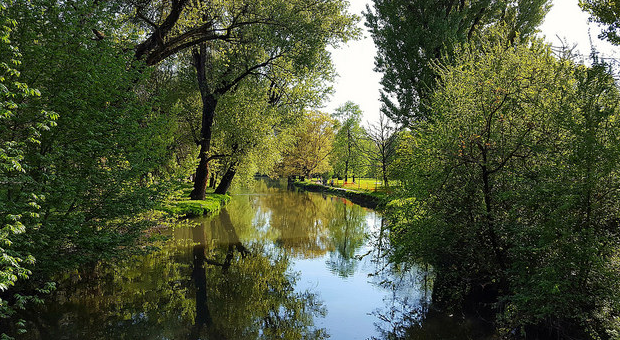
Lambro Park
This post is also available in:
 Italiano (Italian)
Italiano (Italian)
Lambro Park, the largest in Milan, is one of the favorite places in town; it was created east of the city in the 1940s as a green lung inspired by the typical landscape of the local countryside; enclosed among the Rottole, Cimiano, and Feltre districts, it borders with the municipalities of Vimodrone and Segrate, while is traversed by the East Ring Road.
It was built in 1936 by architect Enrico Casiraghi, with the aim of preserving and emphasizing the Lombardy landscape, taking advantage of water resources from the Lambro River, and the lush spontaneous vegetation. The designer modeled the area with peculiar perspective effects created three artificial hills with two ponds (now dry and kept as mere depressions in the ground), and designed a system of avenues about 4.374-yard long)
The park was largely destroyed during WWII (the surviving trees were even used to make firewood) but recreated during the 1950s and 1960s with the acquisition of new land and many new trees. Inside the park, there are some agricultural areas that retain marshland features (namely, the ancient cultivation techniques invented by Cistercian monks).
In recent years, the Municipality has promoted a campaign to enhance the area, restoring its ancient role as the “rural district” of the city.
Among the arboreal species there are locusts (Robinia pseudoacacia “Bessoniana” and “Umbraculifer”), tulip trees ((Liriodendron tulipifera), nettle trees ((Celtis australis), cherry plums (Prunus cerasifera “Pissardii”), East Asian cherry trees ((P. serrulata “Kanzan”), bald cypresses ((Taxodium distichum), beeches (Fagus sylvatica), maidenhair trees (Ginkgo biloba), horse-chestnuts (Aesculus hippocastanum), sweetgum (Liquidambar styraciflua), Eastern black walnuts (Juglans nigra), different species of elms – native and allochtonous – (Ulmus carpinifolia, U. laevis and U. pumila), the iconic black poplars (Populus nigra “Italica”), London plane trees (Platanus x acerifolia), different species of oaks (Q. rubra and Q. coccinea), lindens (Tilia americana), weeping willows (Salix babylonica), and sophoras sofora (Sophora japonica).
There are five farmhouses but only one of them has retained its original features and functions: it’s Cascina San Gregorio Vecchio, located on viale Turchia, which still features housing units, stables, and barns around a large square courtyard.
Then, there are Cascina Mulino Torrette, on via Marotta (completely renovated with two original paddle wheels and millstones), Cascina Cassinetta San Gregorio, on via Marotta as well (made of two completely renovated buildings), Cascina Biblioteca, on via Casoria (active until the 1970s), and finally Cascina Mulino San Gregorio, on via Van Gogh (the current headquarters of GEV).
Old irrigation ditches and canals can still be seen, while only two of the latter are still operational: Isola canal, a deviation of the river which originates on via Licata, and the Molina or Molinara canal, a second deviation which served to feed the two mills that in this area.
Text and photo source: Josef Grunig
Flickr: https://www.comune.milano.it/aree-tematiche/verde/verde-pubblico/parchi-cittadini/parco-lambro
This post is also available in:
 Italiano (Italian)
Italiano (Italian)
Contatti
Altre info
sempre aperto; ingresso libero e gratuito
